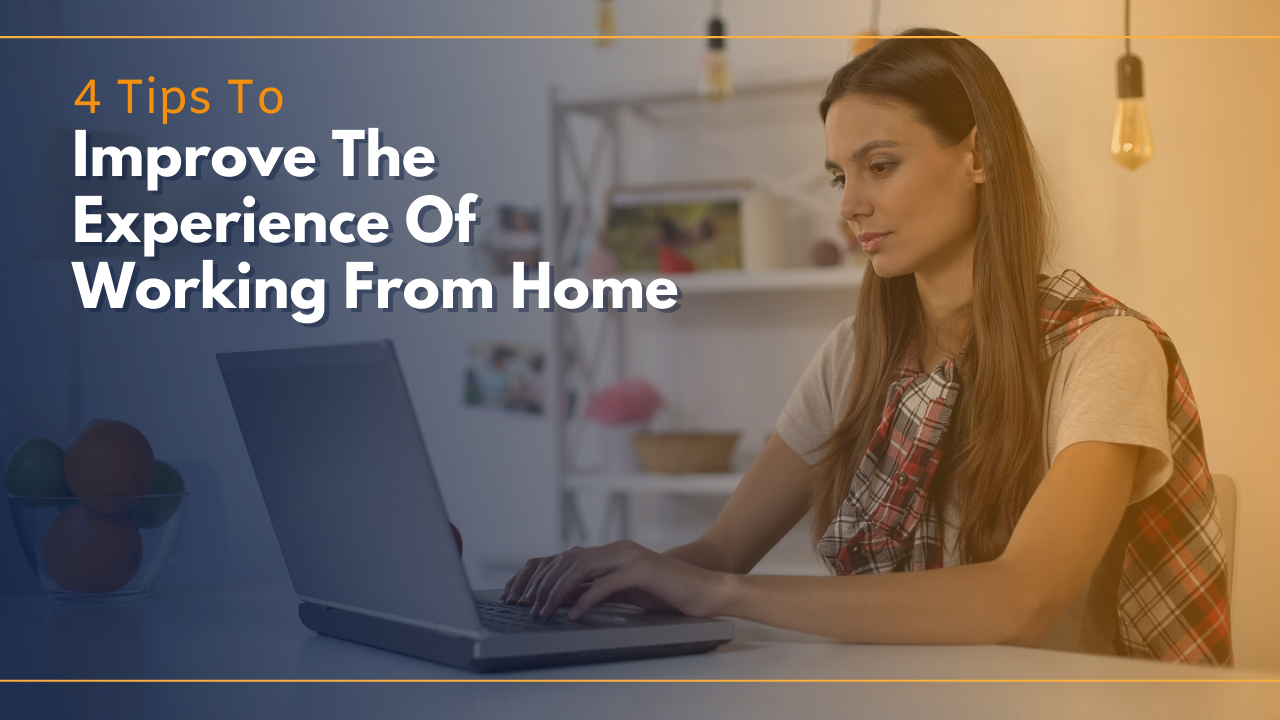- Various remote work experts agree that the first step to “succeeding” in working from home during the COVID-19 pandemic is to acknowledge that we’re not going to be at the top of our game.
- A recent webinar explored various ways we can improve the experience of working from home from both a practical and psychological perspective.
- An ergonomic environment, some structure, and prioritizing mental health can go a long way in making the work from home experience much smoother.
Staying focused, productive, positive – and all the other adjectives we’re told to embrace these days – is hard at the best of times. And as this is nowhere near the best of times, achieving just an ounce of one of them can feel impossible.
That’s normal.
In fact, lots of remote work experts emphasise that the first step to “succeeding” in this climate is to acknowledge that we’re not going to be at the top of our game. There will be days when just being is enough of an achievement.
That said, there are things we, as employers and employees, can do to make the ride a little smoother.
On April 16th, office design and workspace consultancy firm Office Principles facilitated a webinar in which WK Space’s Hannah Nardini, a specialist in commercial interior design, occupational psychology and change management, explored various ways we can improve the experience of working from home from both a practical and psychological perspective.
Here’s what we learnt.
1. An ergonomic environment is key
WK Space recently conducted a survey of 9,000 people based around how they’re coping with working from home. Everyone who took part in the survey is usually office based, so working from home full time is a brand new experience for them.
Only 9% of respondents said they had an “ergonomic” environment to work in, such as an adjustable chair. Nardini acknowledges that there is some ambiguity around employers’ obligations when it comes to providing a comfortable and safe remote work environment.
This is something employers will need to factor into their costs if they decide to implement working from home moving forward. A simple workplace assessment for employees and the provision of extra equipment needs to be prioritised to ensure health and safety.
According to the survey, Generation Z and the Baby Boomers are the two groups finding the transition to remote work the most difficult. The latter because they tend to like to keep work and life separate and the former because they like interacting in the workplace.
Also, in some cases their home environment isn’t conducive to productive work – for instance, they might be in a busy house and have to work in the kitchen or bedroom.
2. In uncertain times, structure is all
Although a lot of people are actually feeling less stressed right now due to the lack of commute, the ability to work in a familiar environment and a sabbatical from “obnoxious managers and colleagues”, 36% say they are feeling more stressed.
Heightened stress levels could be due to the following:
- Lack of structure/ routine
- More distractions
- Blending of home and work life
- Social isolation
Among other strategies, Nardini recommends trying the Pomodoro Technique to establish structure. Use a timer to break down work into intervals (usually 25 minutes) and punctuate them with short breaks. The Pomodoro Technique is split into the following six steps:
1. Select a task
2. Set the timer for 25 mins
3. Work on it until the timer rings
4. When it rings, make a note on paper
5. Take a short break and do something non-work related
6. Take a longer break (20-30 mins) after 4 pomerados
Here are a few other tips that can help keep feelings of stress at bay:
- Get up early – we’re creatures of habit and breaking routine can trigger stress.
- Get dressed – our brains associate lounge wear with slumber so dress for work.
- Find a workspace – working from your bedroom can cause sleeping difficulties because you begin to identify it with work worries, not relaxation.
- Create a work schedule – take your breaks as you would do in the office.
- Exercise – stay active with online classes and try to get some daylight.
- Earn rewards – à la the Pomodoro Technique.
- Connect – keep in touch with others regularly (employers should begin by asking how their employees are doing).
3. It’s time to make mental health a priority
37% of the survey’s respondents (partificualy Millenials and Gen Z’s) said that they believe their company should be offering mental health support to employees. There are lots of things managers do to be supportive, including keeping in touch, communicating clearly, being mindful of how furloughed staff may feel and starting planning the return to work.
During the webinar, Nardini referred to a helpful app called the Hub of Hope. It’s a UK mental health database bringing grassroots and national mental health services together in one place for the first time. (Employers might be interested in sharing it with their teams.)
4. Share an engagement survey
To gauge how employees are feeling and to gain an real understanding of the positive and negative aspects of remote working within their own company, employers should consider sending out a short Engagement Survey.
Insights from the survey should be acted upon to improve people’s experience from a technological, managerial, functionality and psychological perspective.
WK Space’s next webinar is taking place on Tuesday 28th April at 10.00am BST. Renowned speaker, Bertie van Wyk will be delivering a high-octane presentation on the best way to stay productive while working from home. Click here to register for the seminar.


 Dr. Gleb Tsipursky – The Office Whisperer
Dr. Gleb Tsipursky – The Office Whisperer Nirit Cohen – WorkFutures
Nirit Cohen – WorkFutures Angela Howard – Culture Expert
Angela Howard – Culture Expert Drew Jones – Design & Innovation
Drew Jones – Design & Innovation Jonathan Price – CRE & Flex Expert
Jonathan Price – CRE & Flex Expert














